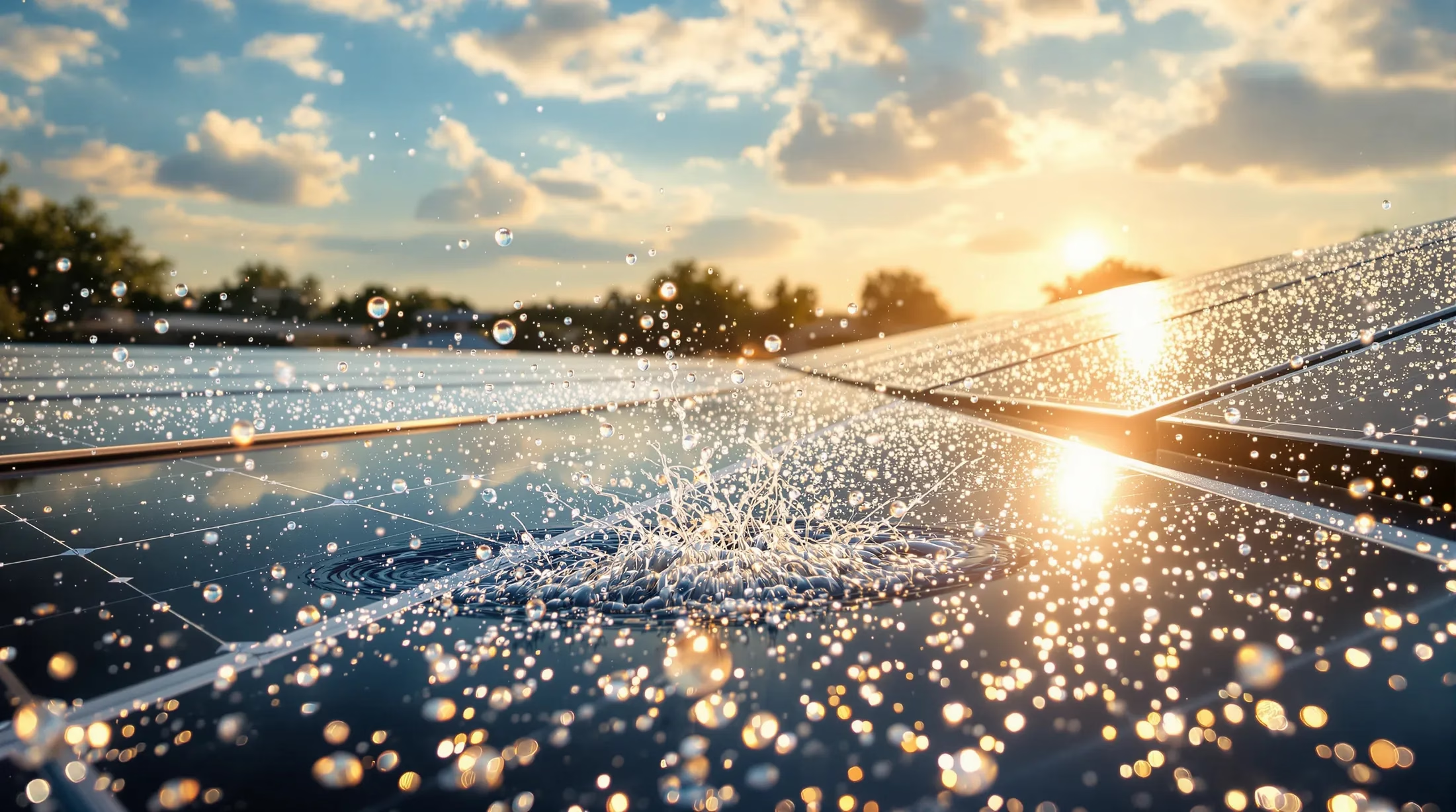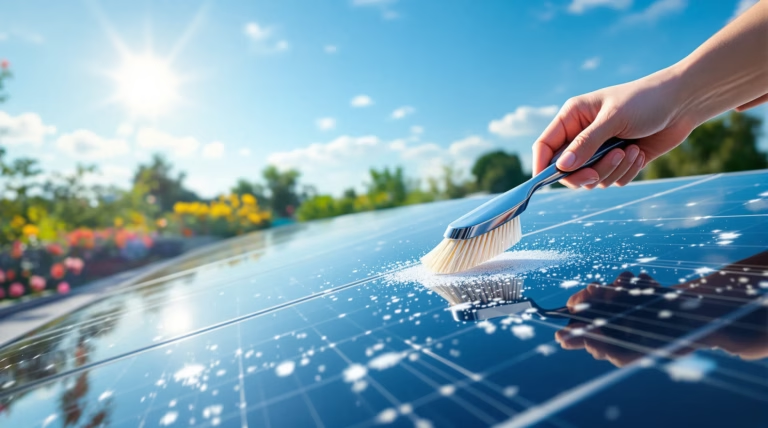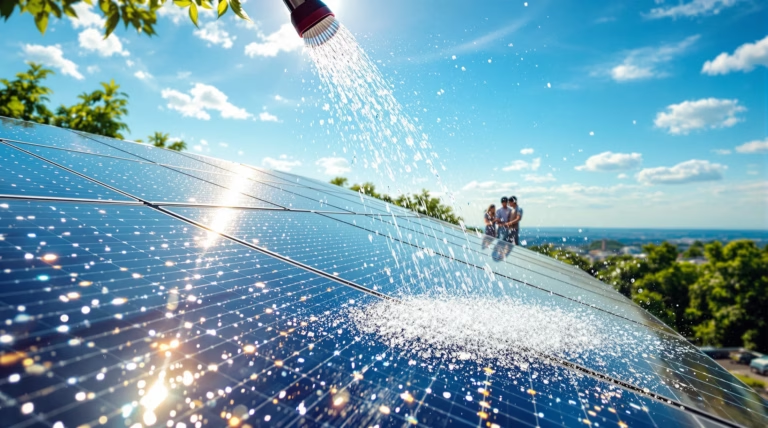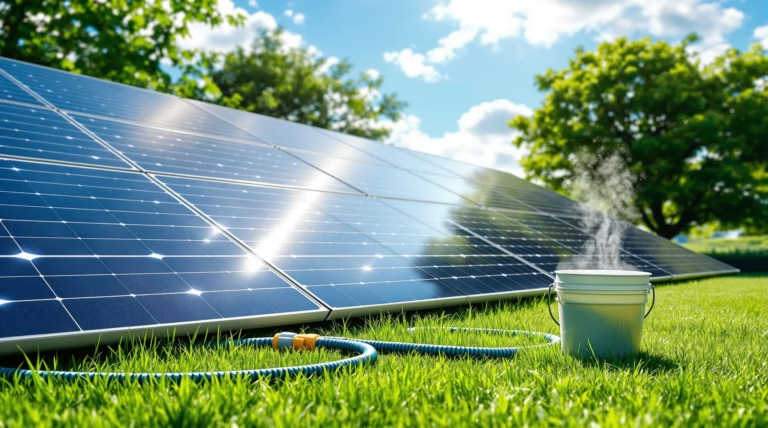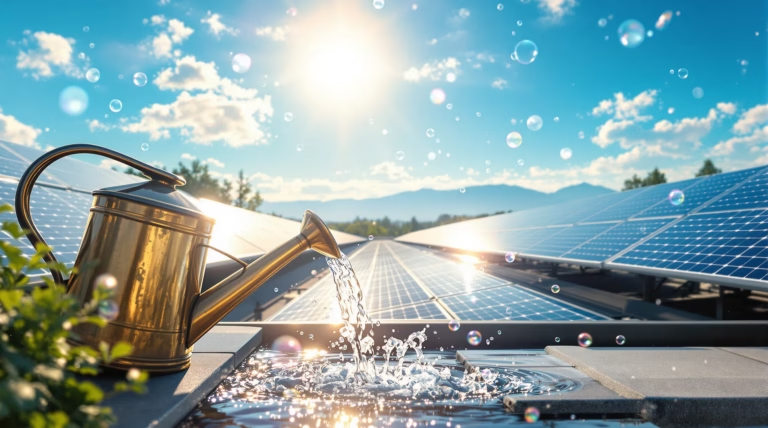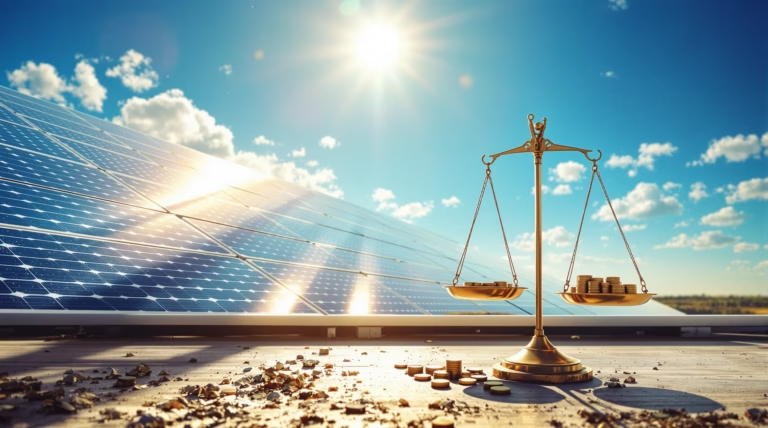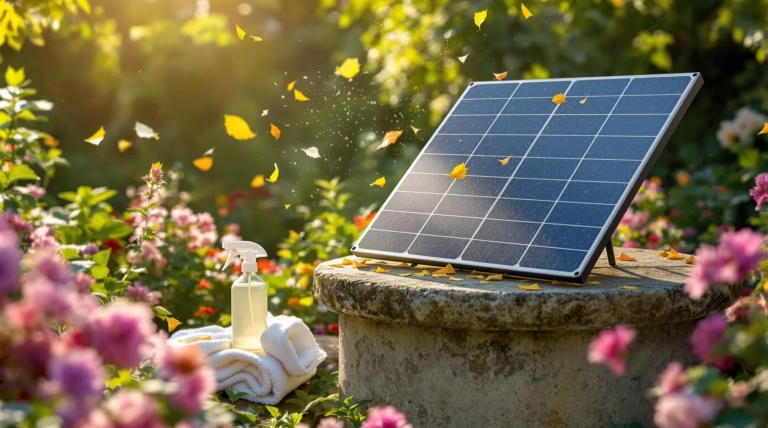Solar Cleaning: Essential Tips for Maintaining Your Solar Panels
Maximize your solar investment’s potential by understanding the critical role of panel maintenance. Regular cleaning not only ensures optimal energy production but can also extend the lifespan of your solar system. Let’s explore why proper solar panel maintenance matters and how to keep your panels performing at their peak.
Why Solar Cleaning is Essential for Your Panels
Solar panels represent a long-term investment in clean energy generation, but their efficiency heavily depends on proper maintenance. Soiling – the accumulation of dirt, dust, bird droppings, pollen, and debris – can block sunlight from reaching photovoltaic cells, reducing energy production by up to 7% annually in the United States and 50% in dustier regions like the Middle East.
Inefficient solar panels directly impact your return on investment. Every blocked ray of sunlight means reduced electricity generation and lower utility bill savings. Moreover, prolonged dirt accumulation can cause permanent damage and potentially void manufacturer warranties that require regular maintenance.
Impact of Dirt and Contaminants on Solar Panels
- Even a thin dust layer reduces efficiency by 5%
- Bird droppings and tree sap create damaging “hot spots”
- Air pollution deposits form stubborn efficiency-degrading films
- Gradual power loss often goes unnoticed without monitoring
- Daily energy production can drop from 30 kWh to 25 kWh or less
Benefits of Regular Solar Panel Cleaning
- Immediate energy production boost of 10-25%
- Increased annual savings (hundreds of dollars for 6kW systems)
- Extended panel lifespan through reduced thermal stress
- Early detection of potential issues (loose wiring, cracks, damaged seals)
- Maintenance of warranty compliance
How Often Should You Clean Your Solar Panels?
While solar panels are designed for low maintenance, finding the right cleaning frequency is crucial for optimal performance. The industry standard recommends one to two annual cleanings, though natural rainfall can help maintain about 95% efficiency in regions with regular precipitation. However, rain alone cannot remove stubborn contaminants like bird droppings or industrial residue.
Recommended Cleaning Frequency
| Installation Type | Recommended Frequency | Optimal Timing |
|---|---|---|
| Residential | Every 6 months | Late spring and early fall |
| Commercial | Quarterly | Based on performance monitoring |
| Utility-scale | Quarterly or more frequent | Based on soiling analysis |
Factors Affecting Cleaning Schedule
- Environmental conditions (pollution, coastal salt spray, agricultural dust)
- Panel mounting angle (steeper angles shed debris better)
- Proximity to trees (sap, leaves, birds)
- Local climate patterns (rainfall frequency, dust storms)
- System performance monitoring data
- Geographic location and seasonal changes
DIY vs. Professional Solar Cleaning
When maintaining your solar investment, you’ll face the choice between self-cleaning and professional services. While DIY cleaning may seem cost-effective, rainwater alone isn’t sufficient for proper maintenance – similar to how rain doesn’t adequately clean your car’s windshield. Professional cleaning ensures thorough contaminant removal, maximizing sunlight absorption and energy production.
Your decision should consider several factors:
- Panel installation height and accessibility
- Roof pitch and safety concerns
- Physical capabilities and comfort with heights
- Equipment availability and expertise
- Warranty requirements and risk tolerance
Pros and Cons of DIY Solar Cleaning
| Advantages | Disadvantages |
|---|---|
| Cost savings ($100-200 per session) | Safety risks from working at heights |
| Flexible scheduling | Potential panel damage from improper tools |
| Immediate issue resolution | Time-consuming process |
| Better system familiarity | No insurance coverage for accidents |
Advantages of Hiring Professional Services
- Specialized expertise and proper equipment
- 15-25% greater efficiency improvements compared to DIY
- Comprehensive insurance coverage and safety protocols
- Documented maintenance records for warranty purposes
- System inspection during cleaning to identify potential issues
- Proper techniques that prevent damage to panel surfaces
Tools and Techniques for Effective Solar Cleaning
Proper solar panel maintenance requires specific tools designed for delicate glass surfaces. Using appropriate equipment not only improves cleaning results but also protects your investment by preventing microscopic scratches that could reduce energy production over time.
Essential Tools for Solar Panel Cleaning
- Soft-bristle brush specifically designed for solar panels
- Telescoping extension pole (12-24 feet)
- Plastic-blade squeegee attachment
- Garden hose with adjustable spray nozzle
- Microfiber cloths for spot cleaning
- Bucket for cleaning solution
For cleaning solutions, avoid harsh chemicals that might damage panel coatings. Use either specially formulated solar panel cleaners or a simple mixture of deionized water with mild soap. A homemade solution of one tablespoon vinegar per gallon of water effectively removes mineral deposits without leaving performance-affecting residue.
Step-by-Step Solar Panel Cleaning Process
- Turn off your solar system according to manufacturer guidelines to prevent electrical hazards
- Choose early morning or evening hours when panels are cool to avoid thermal shock
- Perform initial rinse with water to remove loose debris
- Apply cleaning solution using a soft-bristle brush with gentle, top-to-bottom motions
- Allow solution to soak briefly on stubborn spots
- Thoroughly rinse all soap residue
- Use squeegee to remove excess water
- Allow panels to air dry before reactivation
- Document cleaning date for warranty purposes
Post-Cleaning Inspection and Maintenance
A thorough post-cleaning inspection is essential for maximizing system performance and longevity. Research indicates that poorly maintained solar systems can lose up to 40% of their power generation capacity. Regular maintenance and documented inspections are often required for warranty coverage, making this step crucial for protecting your investment.
Conducting a Thorough Inspection
- Examine panels for physical damage:
- Microcracks
- Discoloration
- Water infiltration
- Frame seal integrity
- Mounting hardware condition
- Check electrical components:
- Connection points for corrosion
- Wire insulation damage
- Conduit integrity
- Connection tightness
- Document findings with dated photographs
Ensuring Long-Term Solar Panel Efficiency
Monitor system performance before and after maintenance to track efficiency improvements, which typically range from 5-25% post-cleaning. Modern solar installations include monitoring capabilities for tracking daily, weekly, and monthly energy production.
- Develop a comprehensive maintenance schedule considering:
- Seasonal pollen levels
- Local construction activity
- Agricultural operations
- Weather patterns
- Implement preventative measures:
- Trim overhanging branches
- Install critter guards
- Apply protective coatings
- Regular performance monitoring

